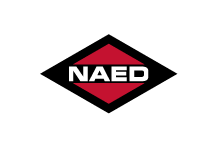By Ed Orlet and Mark Dancer, 10.18.2022
Under the leadership of the NAED Futures Group, we recently conducted our first Office Hours — a live chat with members, suppliers, and stakeholders. Our goal is to explore ideas and develop foresight for the future of distribution. We discussed possibilities for supplier go-to-market strategies and what distributors can do to remain valued partners and, better, to lead the value chain forward in the digital age. In this edition, we share our key takeaways.
The most important observation from our first NAED Office Hours is that we need a foundation to help organize our explorations, conversations, assessments, and actions—one that aligns with unprecedented innovation possibilities shaped by the history of distribution and its untold future in the digital age. Searching, we found the Playbook for Strategic Foresight and Innovation, published by the Human Sciences and Technologies Advanced Research Institute (H-STAR) at Stanford University and developed by Tamara Carleton, William Cockayne, and Antti-Jussi Tahvanainen. Carleton and her co-developers offer the playbook as a practical resource to help anyone step into the role of an innovation leader, creating plans for the future and delivering results today. We will use the playbook’s methods, case studies, and frameworks as we go.
Below, we share three discussions from our Office Hours, each with a lightly edited comment from our audience, followed by ideas for crafting stories in the pursuit of foresight and radical innovations. It’s a start, and we look forward to your comments and suggestions.
Finding common ground
Distributors and manufacturers exist to solve problems, but with differing approaches. As both parties adopt digital technologies, new opportunities for collaboration will emerge. One supplier explained:
We talk a lot about digital transformation with our distribution partners and have learned that digital commerce isn't necessarily all about purchasing and placing orders. During the pandemic, customers searched for solutions and made selections online, and customer buying behaviors changed. We are researching online behaviors and working on our strategies. One priority is to find ways that we can collaborate with our distributor partners to “own the selection” by leveraging each other’s digital capabilities.
Stories about collaboration are essential because manufacturers and distributors still need each other to offer complete solutions for customers despite disintermediation and disruption. Progress requires approaches beyond defining distribution’s role as adding value to supplier products. Digital customer experiences enable the customers to journey through all phases, starting when a need arises and continuing through the use of products after they are purchased and delivered. “Owning the selection” is only one way to invite suppliers and distributors to work together.
Helping customers innovate
Operating as connected businesses in a digital value chain means that systems must be connected across and among suppliers, distributors, and customers. Application programming interfaces (APIs) are a start, but collaboration and standardization can lead to breakthrough benefits. One member from our audience explained:
Manufacturers, distributors, and technology partners can collaborate to help contractors innovate and become more operationally efficient. One focus area is creating estimates for commercial building projects, all the way through to 3D modeling and integration with ERP systems for procurement, which might include fabrication. There is a lot of friction because estimators use their own dates and processes. We can standardize information sources and automate project workflow, and everyone benefits. But it takes an industry-wide effort.
Most manufacturers and distributors act in their own interest as they investigate and master digital technologies. This is natural because collaboration requires transparency and committed resources. By developing stories around working together to help customers innovate, suppliers and distributors may find radical innovations leading to unimagined mutual benefits. Such stories can break down barriers, support the formation of collaboration teams, and point to returns to support investment.
Data as a shared resource
In the digital age, value chains will operate algorithms powered by data from suppliers, distributors, and customers. But today, all parties protect most of their data to maintain a competitive advantage. One audience member offered:
Data sharing is a critical topic and something that hits close to home in our business and with our partners. We are developing our data analytics and tools because we must develop algorithms to predict purchases, suggest conversations, and solve problems. Manufacturers and distributors that find ways to share data will be far ahead of those that don’t. But pooling data requires standardization around part numbering schemes and how data is organized.
Data sharing will be the norm because digital technologies that are fired by the most comprehensive data yield exponential gains. Standardization seems necessary, but automation tools may evolve to help remove the need to implement rules or data cleanup work by humans. Moreover, if shared data creates significant and otherwise unattainable improvement in sales effectiveness or operational efficiencies, distributors and manufacturers will happily collaborate, invest, and implement new processes. Stories of potential futures, debated and assessed by partners, are essential for imagining the benefits of sharing data and operating as connected businesses. Stories may help usher in the future.
We’ve received excellent feedback on our first Office Hours and look forward to our next session. To get the full impact of the Office Hours live sessions, participation is key. Please join us (register here) on November 10th at 1 pm CST for a discussion of Marketplaces as Competitors or Collaborators. For comments or suggestions on how to improve Office Hours, reach out directly to Ed Orlet at eorlet@naed.org or Mark Dancer at mark.dancer@n4bi.com.
Read the full overview of the first session here.
Remember to visit the page and subscribe to our email list:

